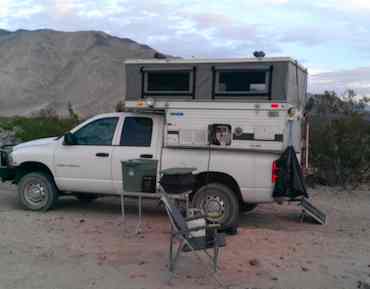
But testing out an off-road, off-grid solar power setup, we recently came to some interesting conclusions. Like many who read this, we like the outdoors but our kids tend to destroy the calm with their demands for the comforts of home. To tell you the truth, I believe that every single camping trip I’ve ever been on has been in the rain, so I can understand why bringing along some of the comforts of home can be attractive. Unfortunately, those “comforts” might include things like the laptop, a television, or a refrigerator. Going beyond this, what happens when the comforts of home are taken away by power outage, whether by storm or blackout?
This tends to happen regularly at my place in the highlands of Majorca’s Tramuntana mountains, such as last night when we lost power for a few hours. Candles only go so far, and do nothing for the refrigerator, laptops for work, cell phones for communication (the local cell tower has backup power) or the electric shower. A cheap Chinese 800W generator is a little over $150, not to mention fuel costs. On the other hand, depending on how much power you need, a small solar power system and energy storage could be all that is required.
Just for the basics, and as long as you have a few hours of sun, you could run a television, charge cell phones, and laptops, even keep a 12 V cooler running for days, all for a $700 system, as opposed to a $30,000 7.8 kW solar power system. The solar power unit, at least in this setup, tested by TacomaHQ, is a 100 W Renogy solar panel and charge controller, which was tested putting out 22.1 V at 7.5 A in full sun. The energy storage consists of an ArkPak with a 93 Ah deep cycle SLA battery. Judging from the calculations, it takes about six hours in full sun to charge the ArkPak by 50 Ah. Unless you run down the ArkPak every night, this could be the perfect off-road or off-grid solar power and energy storage setup. Add a second solar panel, another $170 or so, and you could get a full charge every day, in case you want to watch movies on a 40″ flat-screen television.

One Response
The main problem with this setup is that the ArcPak is only rated at a maximum solar input of 6 amps. So regardless of the amount of panels you hook up to the system, it only charges the battery at 6 amps. It seems like this would be good for a camping trip, but with the ArcPak limiting the charge to the battery it sounds like you would have to plug it into a 120v source if you plan on using the battery to its fullest.